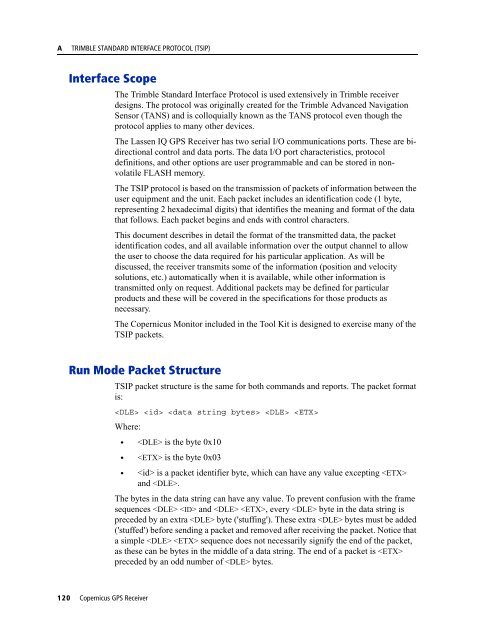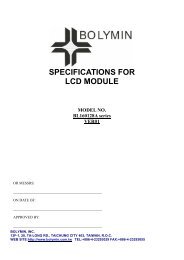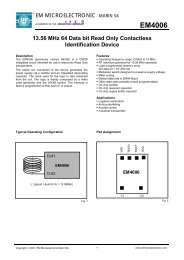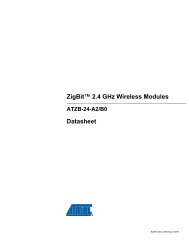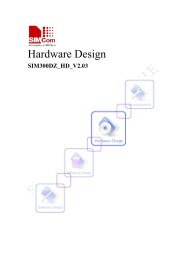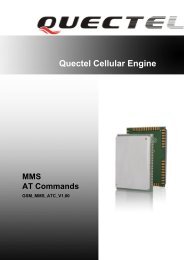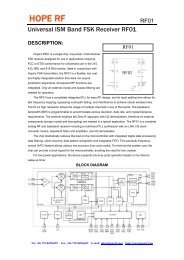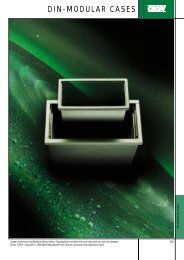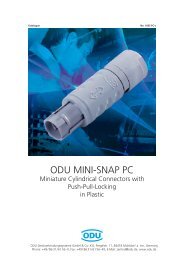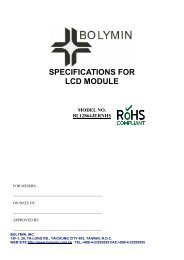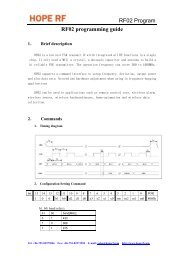REFERENCE MANUAL - FTP Directory Listing - Trimble
REFERENCE MANUAL - FTP Directory Listing - Trimble
REFERENCE MANUAL - FTP Directory Listing - Trimble
You also want an ePaper? Increase the reach of your titles
YUMPU automatically turns print PDFs into web optimized ePapers that Google loves.
A<br />
TRIMBLE STANDARD INTERFACE PROTOCOL (TSIP)<br />
Interface Scope<br />
The <strong>Trimble</strong> Standard Interface Protocol is used extensively in <strong>Trimble</strong> receiver<br />
designs. The protocol was originally created for the <strong>Trimble</strong> Advanced Navigation<br />
Sensor (TANS) and is colloquially known as the TANS protocol even though the<br />
protocol applies to many other devices.<br />
The Lassen IQ GPS Receiver has two serial I/O communications ports. These are bidirectional<br />
control and data ports. The data I/O port characteristics, protocol<br />
definitions, and other options are user programmable and can be stored in nonvolatile<br />
FLASH memory.<br />
The TSIP protocol is based on the transmission of packets of information between the<br />
user equipment and the unit. Each packet includes an identification code (1 byte,<br />
representing 2 hexadecimal digits) that identifies the meaning and format of the data<br />
that follows. Each packet begins and ends with control characters.<br />
This document describes in detail the format of the transmitted data, the packet<br />
identification codes, and all available information over the output channel to allow<br />
the user to choose the data required for his particular application. As will be<br />
discussed, the receiver transmits some of the information (position and velocity<br />
solutions, etc.) automatically when it is available, while other information is<br />
transmitted only on request. Additional packets may be defined for particular<br />
products and these will be covered in the specifications for those products as<br />
necessary.<br />
The Copernicus Monitor included in the Tool Kit is designed to exercise many of the<br />
TSIP packets.<br />
Run Mode Packet Structure<br />
TSIP packet structure is the same for both commands and reports. The packet format<br />
is:<br />
<br />
Where:<br />
• is the byte 0x10<br />
• is the byte 0x03<br />
• is a packet identifier byte, which can have any value excepting <br />
and .<br />
The bytes in the data string can have any value. To prevent confusion with the frame<br />
sequences and , every byte in the data string is<br />
preceded by an extra byte ('stuffing'). These extra bytes must be added<br />
('stuffed') before sending a packet and removed after receiving the packet. Notice that<br />
a simple sequence does not necessarily signify the end of the packet,<br />
as these can be bytes in the middle of a data string. The end of a packet is <br />
preceded by an odd number of bytes.<br />
120 Copernicus GPS Receiver


